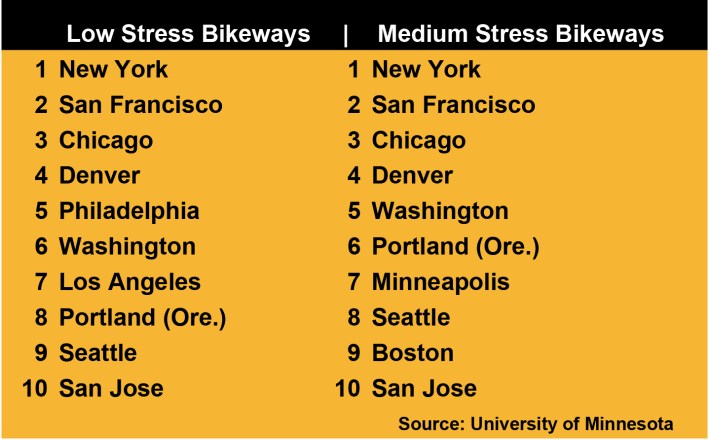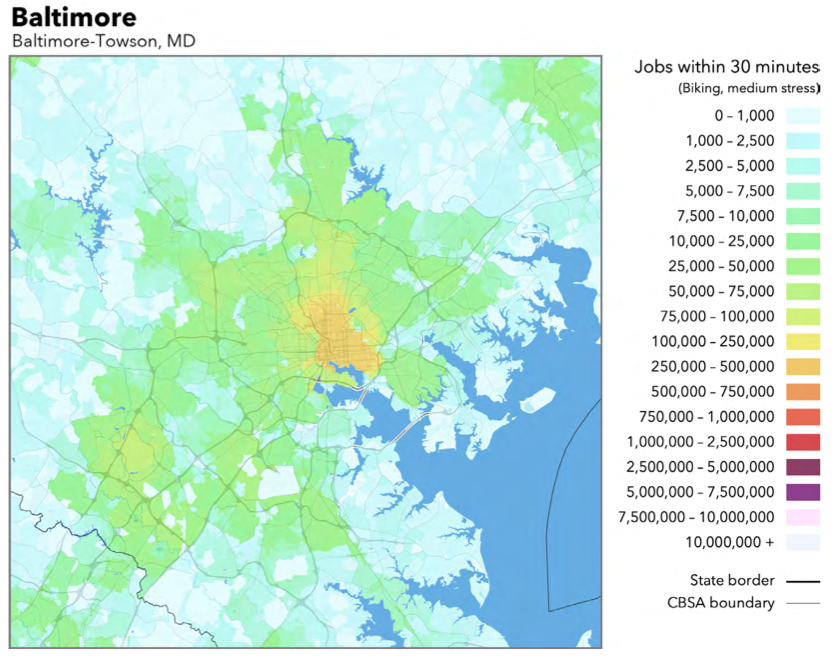In the American cities with the best bike infrastructure, cyclists are able to reach 75 percent more jobs on safe dedicated bike facilities, a new report shows.
University of Minnesota researchers mapped how many jobs the average person in every major U.S. metro area is able to reach by biking on both "low-stress" facilities -- like trails and protected bike lanes -- and "medium-stress" bike facilities, bike regular bike lanes and some minor streets with sharrows.
"Job density" in obviously higher in certain metro cores, but the report also shows that smart investments in bike infrastructure can put economic opportunities safely within reach for people on bikes.
Here are the cities that offered the bike access to jobs:

Although the Top 10 list primarily shows the cities with the highest overall employment, bike infrastructure can have a big impact on cities rankings, say the authors, Andrew Owen and Brendan Murphy.
For example, "the Minneapolis–St. Paul metropolitan area is ranked 14th largest by total employment ... but ranks 12th and seventh by access to jobs on low-stress and medium-stress bicycle networks, respectively.
"Conversely, Houston ranks fifth by total employment, but 32nd by access to jobs on both low-stress and medium-stress bike networks," they said.
Overall, Portland, Minneapolis and San Francisco offered the largest increases in bike access on special facilities. They each out average residents within 75 percent as many jobs on bike infrastructure as were available to a cyclist by biking on an unimproved road system.
Onward down he list, there was a lot of variation. The average Atlanta resident, the ranking shows, can reach 4,127 jobs in a half hour by "low-stress bikeway." By comparison, the average Denver resident can reach 18,104. Tampa residents can access on average 2,318 in the same time frame. But in Washington, D.C. it is 15,463.
Cities that want to improve accessibility to jobs by bike can either add bike infrastructure or increase the concentration of employment by where people live, Owen and Murphy say.
The Accessibility Observatory at the University of Minnesota has also used this research method to measure job accessibility in metro regions by car and by transit. Check out the full study to see how your city ranked.







